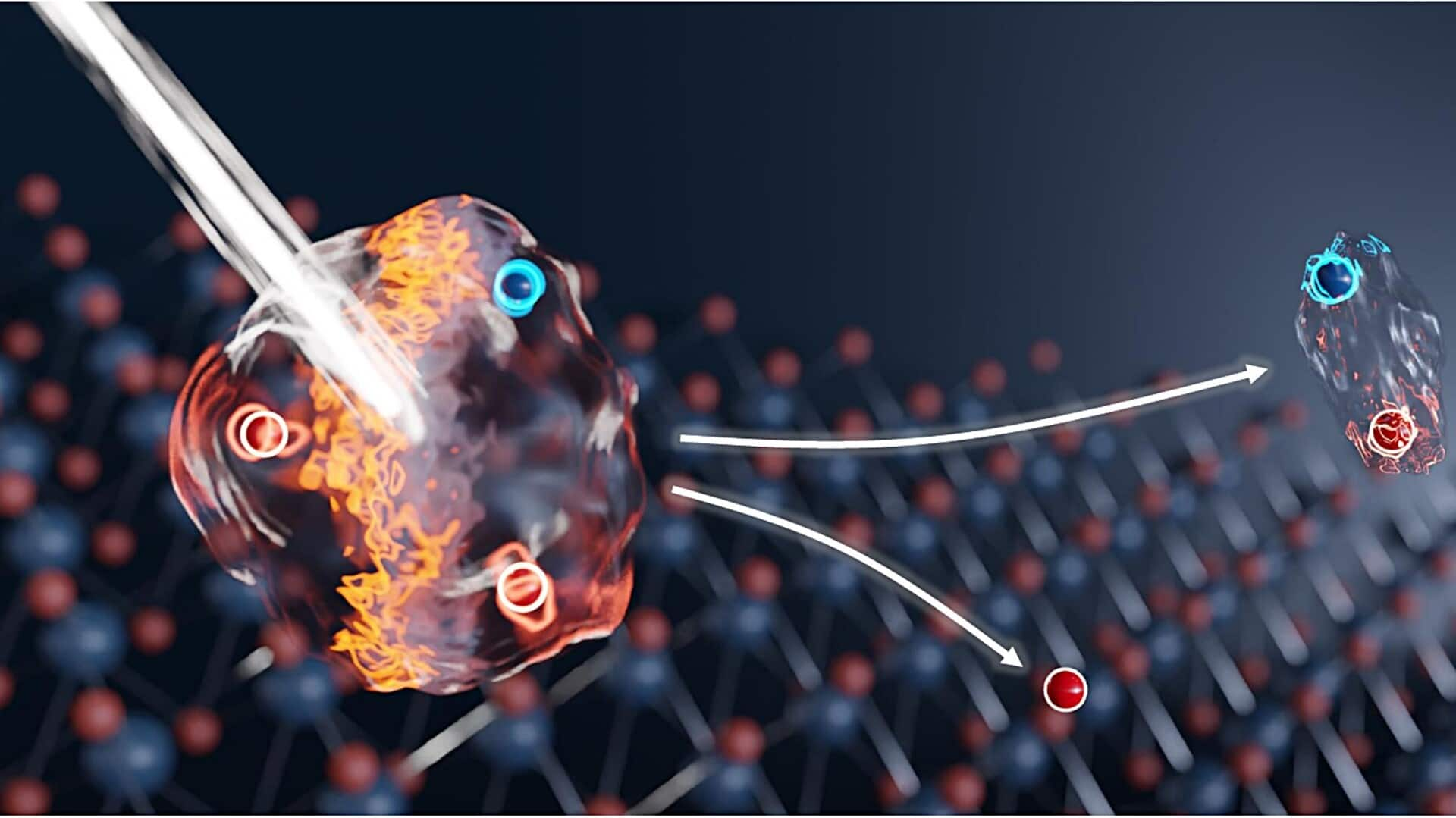
Quantum breakthrough could revolutionize optical data processing and sensor technology
What's the story
An international research team, led by TU Dresden, has made significant strides in the field of quantum technologies and electronics. The team successfully induced a rapid switching process between electrically neutral and charged luminescent particles, within an ultra-thin material. This breakthrough, published in Nature Photonics, could potentially revolutionize optical data processing and flexible detectors.
Material characteristics
The unique properties of 2D semiconductors
Two-dimensional semiconductors are quite different from the ones we're used to. They've got a special ability to create exciton particles pretty easily. So, when an electron soaks up energy and leaves behind a positively charged "hole," it gives rise to this exciton or electronic pair. Now, if there's another electron hanging around, it teams up with the first one to form a three-particle state called a trion. This trion has its own electrical charge and gives off strong light.
Switching process
Potential of exciton-trion interplay
The interplay between excitons and trions has always been a captivating process, sparking curiosity about its future applications. While a number of labs have successfully switched between these two states, the speed was often a bottleneck. However, researchers from TU Dresden and HZDR have managed to crank up the speed of this switching process.
Experimental details
The experiment: A significant leap in switching speed
The team did their experiments at a one-of-a-kind facility at HZDR, using the FELBE free-electron laser that spits out intense terahertz pulses. First, they directed short laser pulses onto an atom-thin layer of molybdenum diselenide at super-cold temperatures, creating excitons. These excitons then quickly snagged an electron from the material itself, turning into trions.
Process reversal
Terahertz pulses and rapid reversion to excitons
Once the team created trions, they shot terahertz pulses at the material. This made the trions switch back to excitons at lightning speed. The magic ingredient in this whole experiment, was getting the frequency of these pulses just right to break the weak bond between an exciton and an electron. This happened in just a few picoseconds (that's a trillionth of a second), which is almost 1,000 times faster than what we could do before with pure electronic methods.
Potential uses
Future prospects and applications of the research
This fresh technique is like a treasure trove for future research. From diving into complicated electronic states to material platforms, the sky's the limit. Plus, it might just be the game-changer we need in sensor tech and optical data processing. Chernikov from TU Dresden chimed in saying, "Based on the demonstrated switching processes in atomically thin semiconductors, it may be possible in the long term to develop detectors that work in the terahertz range."